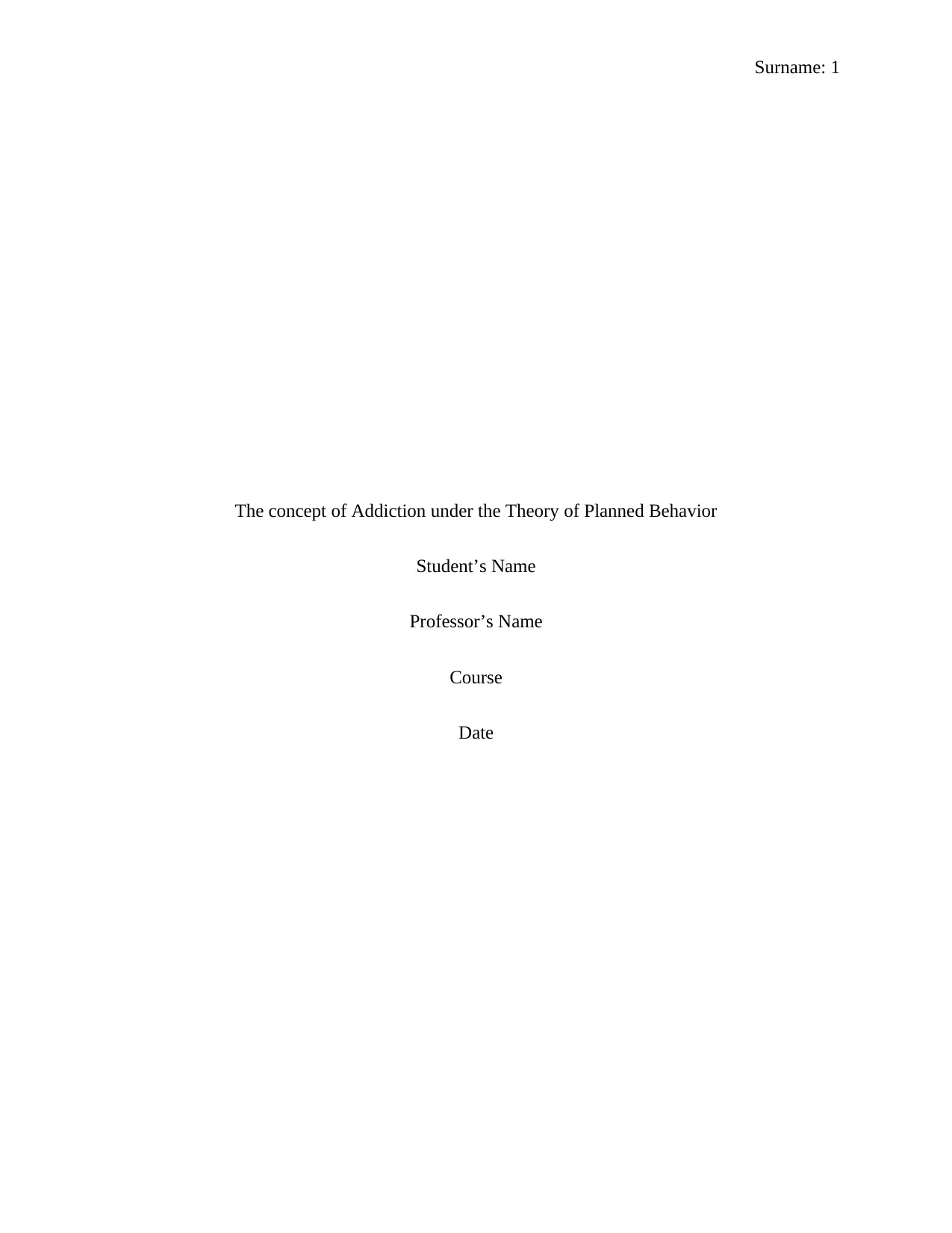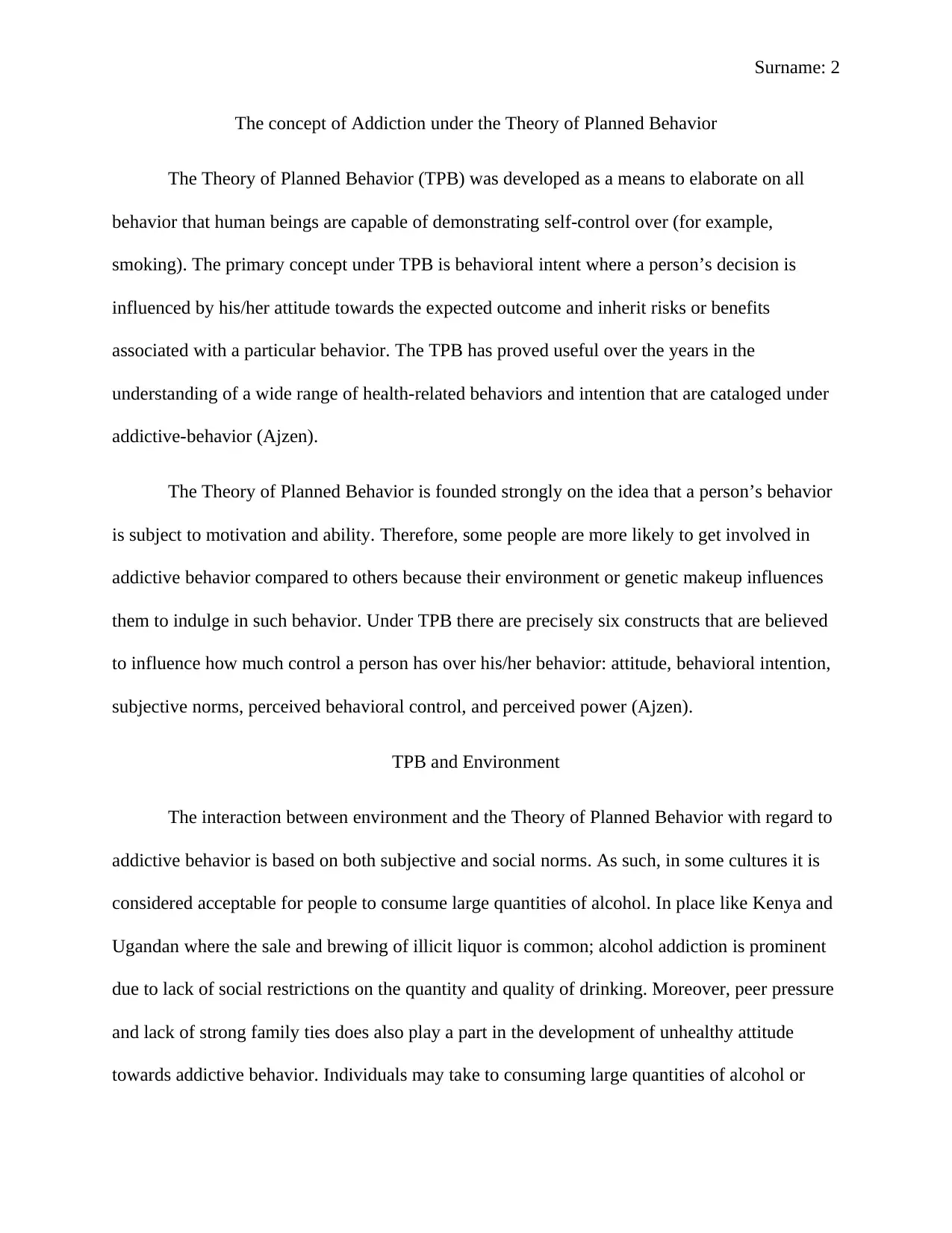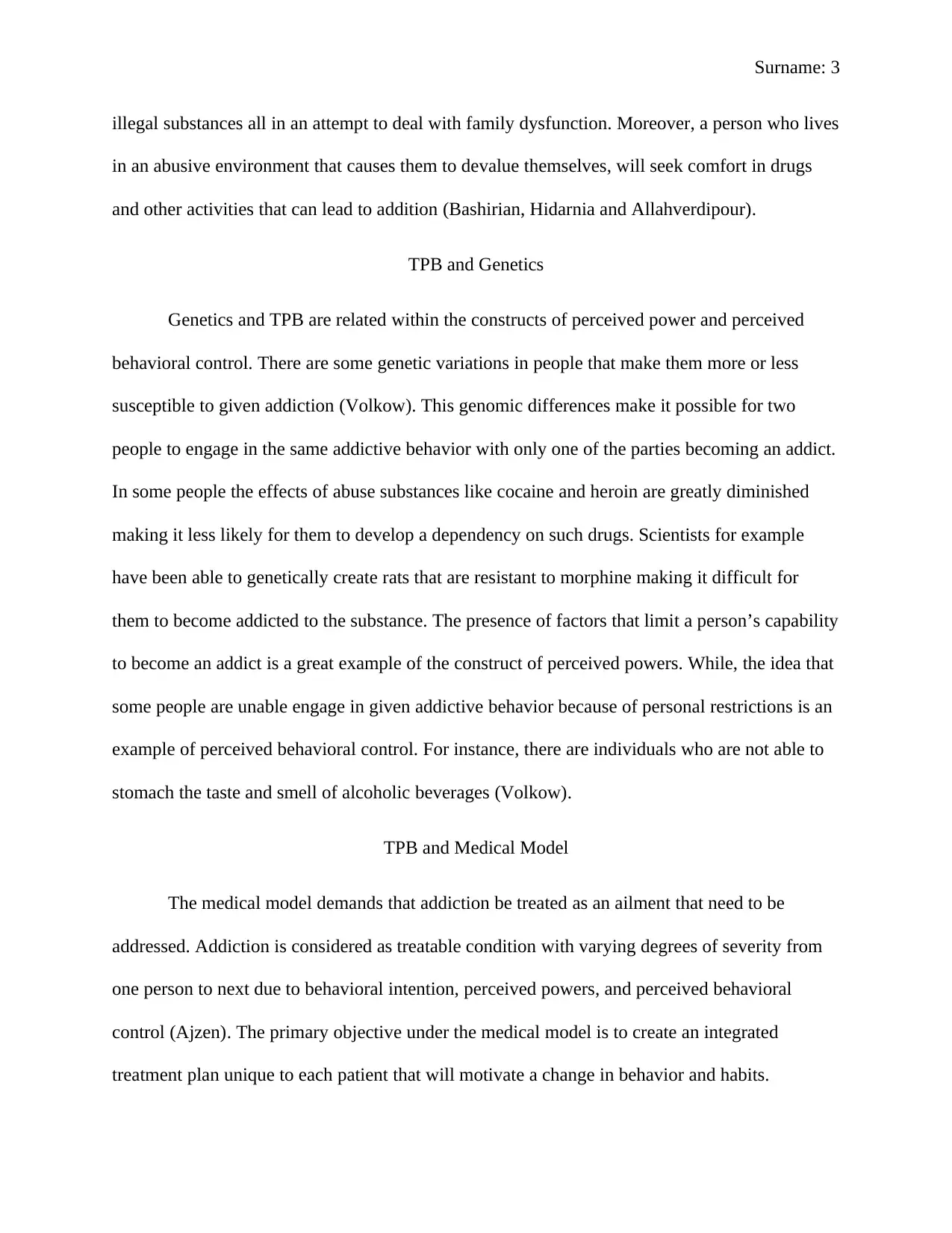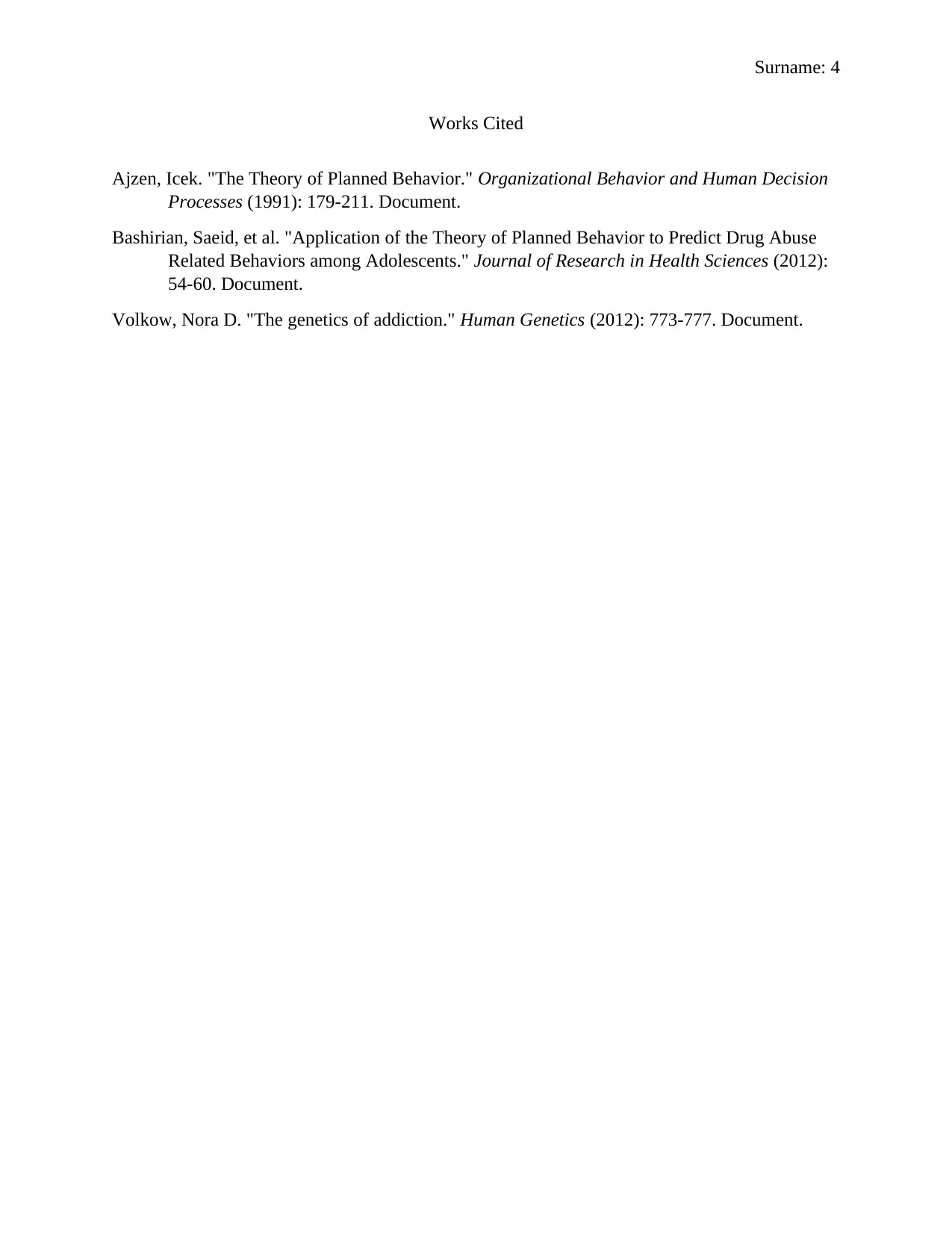Analysis of Addiction: Theory of Planned Behavior and Influences
VerifiedAdded on 2022/08/14
|4
|757
|12
Essay
AI Summary
This essay examines the concept of addiction through the framework of the Theory of Planned Behavior (TPB). It explores how behavioral intentions, subjective norms, and perceived behavioral control influence an individual's susceptibility to addictive behaviors. The essay analyzes the impact of environmental factors, such as cultural norms and peer pressure, on the development of addiction, as well as the role of genetics in influencing vulnerability. Additionally, it discusses the medical model's approach to treating addiction, emphasizing the importance of integrated treatment plans tailored to each patient's unique circumstances. The essay incorporates key constructs of TPB, including attitude, behavioral intention, and perceived power, to provide a comprehensive understanding of the complexities of addiction.
1 out of 4











![[object Object]](/_next/static/media/star-bottom.7253800d.svg)